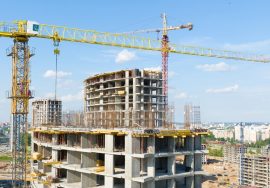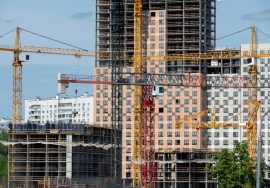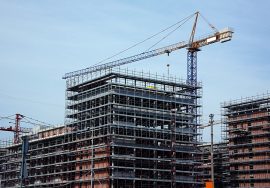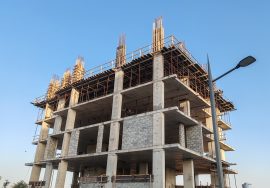
Carbon Footprint Reduction in Construction: Building a Greener Future
Carbon Footprint Reduction in Construction: A Step Toward Sustainability
The construction industry is one of the largest contributors to global greenhouse gas emissions. As cities grow and infrastructure expands, the need for carbon footprint reduction in construction has become more urgent than ever. By adopting eco-friendly materials, sustainable practices, and renewable technologies, the sector can significantly reduce its environmental impact while supporting a greener economy.
Explores the importance of carbon footprint reduction in construction, the methods to achieve it, and how it shapes the future of sustainable development in India.
Understanding Carbon Footprint in Construction
A carbon footprint refers to the total amount of carbon dioxide and other greenhouse gases released during various stages of a building’s lifecycle—design, material production, transportation, construction, operation, and demolition.
In construction, most emissions come from energy-intensive materials like cement, steel, and glass. The machinery, transportation, and waste produced on-site further increase the overall carbon output. That’s why carbon footprint reduction is a vital part of any sustainable building strategy.
Why Carbon Footprint Reduction Matters
The global construction sector accounts for nearly 40% of total CO₂ emissions. Reducing this footprint is crucial for meeting international climate goals and achieving a sustainable future.
In India, where rapid urbanization drives massive infrastructure growth, carbon footprint reduction in construction not only supports the country’s net-zero by 2070 target but also reduces costs, improves efficiency, and enhances building performance.
Effective Strategies for Carbon Footprint Reduction
1. Sustainable Building Materials
Switching to low-carbon building materials like bamboo, recycled steel, and fly ash concrete can significantly cut emissions. These materials are durable, affordable, and energy-efficient—key for carbon footprint reduction in construction projects.
2. Energy-Efficient Design
Architects can achieve carbon footprint through smart building design. Passive cooling, natural lighting, and high-quality insulation reduce reliance on artificial energy, cutting operational emissions.
3. Renewable Energy Integration
Installing solar panels, wind turbines, or other renewable systems ensures that buildings use clean energy sources. This approach not only contributes to carbon footprint but also saves long-term operational costs.
4. Efficient Waste Management
Construction waste is a major source of emissions. Recycling and reusing building materials can help minimize waste and support carbon footprint reduction across all project stages.
5. Smart Technologies and Automation
Digital tools like Building Information Modeling (BIM) and AI-driven monitoring systems optimize resource use and improve energy performance. These innovations play a crucial role in achieving carbon footprint goals.
India’s Efforts Toward Carbon Footprint Reduction
India is taking major steps to promote carbon footprint in construction through initiatives like the Energy Conservation Building Code (ECBC) and National Mission on Sustainable Habitat. These programs encourage energy-efficient building designs and sustainable urban planning.
Organizations such as the Indian Green Building Council (IGBC) are leading the movement by certifying green buildings that follow strict sustainability standards.

Benefits of Carbon Footprint Reduction in Construction
-
Environmental Protection: Reduces greenhouse gas emissions and slows climate change.
-
Economic Efficiency: Cuts long-term energy and maintenance costs.
-
Healthier Spaces: Promotes better air quality and comfortable indoor environments.
-
Regulatory Compliance: Aligns with national and international sustainability standards.
-
Enhanced Brand Image: Companies embracing carbon footprint gain a reputation for responsibility and innovation.
Collaborate for a Sustainable Tomorrow
Achieving significant carbon footprint requires collaboration between architects, developers, policymakers, and sustainability experts.
At AMS India, we help organizations adopt sustainable construction techniques, optimize energy use, and implement eco-friendly materials for low-carbon development. Together, we can create buildings that are as efficient as they are environmentally responsible.
Conclusion: Building Responsibly for Future Generations
Carbon footprint in construction isn’t just an environmental choice—it’s a long-term investment in a sustainable future. By rethinking design strategies, choosing renewable energy, and innovating responsibly, we can build cities that thrive without harming the planet.
Every effort toward carbon footprint takes us closer to a world where progress and sustainability coexist in perfect balance.
Read more related articles to enhance your knowledge and make informed decisions
Cost-Effective Modular Construction: Fast, and Sustainable Building Solutions
Smart Modular Buildings: Innovative, Efficient, and Sustainable Construction








